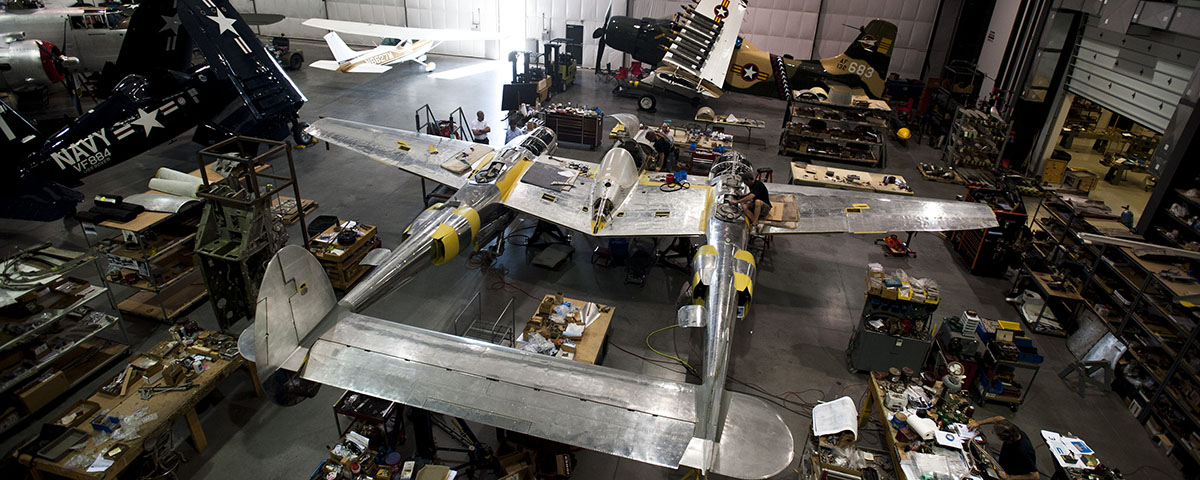The Lockheed P-38 Lightning was a technological marvel when it arrived in the Pacific theater in August 1942: turbocharged twin Allison engines, tricycle landing gear, Fowler flaps, butt-jointed and flush-riveted skin, bubble canopy and enough speed that it could tweak the tail of that jet age dragon called compressibility. The Japanese had nothing like it, and the hulking Lightning became the Army Air Forces’ most important Pacific fighter. Richard Bong scored 40 victories with P-38s to become the all-time U.S. ace of aces.
Those first Pacific P-38s were F-5 photorecon variants, and the airplane shown here, a P-38F known as White 33, was one of the very first four gunned-up Lightnings to challenge Zeros and Oscars, arriving in New Guinea in September 1942.
The aviation equivalent of a car collector’s barn find is the mythical buried rarity—typically said to be a Spitfire—but White 33 was actually unearthed for restoration. The fighter had remained in New Guinea until it was stripped and scrapped in 1944, and after the war it was bulldozed with several P-47Ds into a large pit at Dreger Field, a fighter/transport base in Finschhafen, east of Lae (where Amelia Earhart had made her last takeoff, in July 1937).
In 1999 an Australian group uncovered what was left of White 33, and in 2002 the remains were delivered to collector James Slattery for return to flight by WestPac Restorations, in Colorado Springs, Colo. The job turned into the most comprehensive P-38 restoration ever done, with features not even present on the famous Glacier Girl, and it has produced one of only two flying P-38s with working turbochargers. It is also the earliest and most historic P-38 ever restored, and shop co-owner William Klaers admits that “It’s probably the hardest project WestPac has ever done.”
In a fortunate coincidence, 100-year-old Colorado Springs AAF veteran Frank Royal recently met Klaers and told him he’d flown P-38s in the Pacific. As they talked, it came to light that Royal had been one of the first to fly White 33, since he was the commander of the squadron to which it had been delivered.





